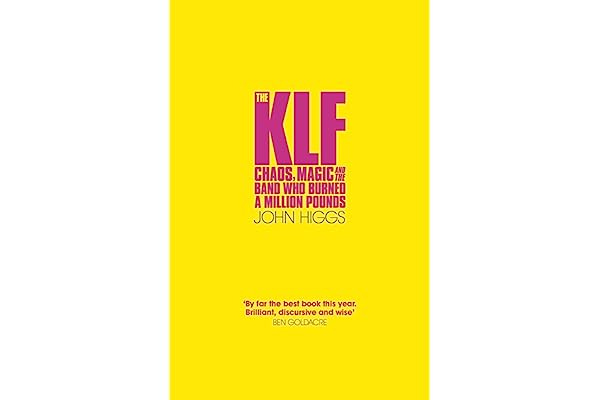Book Rex: The KLF by John Higgs
How a 90's era rave band and a book about them can teach you how to change your worldview
The 80s and 90s were a strange time for music — studio labels were tightening their stranglehold on pop music, but the world was still bursting with new genres and trends like grunge, hip-hop, and rave music. One of the strangest pop music acts of the era was the British electronic band known as the KLF.
The KLF had a string of hits, including the number one single “Doctorin’ The Tardis,” which is basically just the Doctor Who theme mixed with Gary Glitter’s “Rock and Roll” which you probably remember mostly from Jock Jams.
The KLF produced great music for raves, but far more interesting than their music was their politics and their stunts — they despised the music industry, and basically behaved in as alienating and as borderline criminal a manner as possible to more or less kill their career. But every stunt they pulled seemed to only earn them the adulation of the music press.
For example: they were invited to headline the BRIT awards, and they made it as alienating as possible: they played their hit song with the extremely difficult to listen to crust metal band Extreme Noise Terror and then fired blanks into the audience. They dumped a sheep’s corpse at the door of the afterparty and announced their retirement from the music.
It was applauded as a wonderful stunt, and their cachet only went up.
And then, they finally did something that the music industry couldn’t forgive. They went up to an island in Scotland with a suitcase full of money — £1,000,000 — and set the lot of it on fire.
The KLF: Chaos, Magic, and the Band Who Burned a Million Pounds
When the British writer John Higgs heard about the KLF burning a million pounds, he realized that there was no space in his brain for such an action — it was too outside the realm of comprehension. It didn’t fit his worldview. Why would anyone do that? Was it irresponsible? Was it brilliant? Was it political?
In order to make sense of it, he wrote perhaps the greatest non-fiction book I’ve ever read, The KLF: Chaos, Magic, and the Band Who Burned a Million Pounds.
The resulting book is not only an examination of the history of the KLF, but also a look into how our brains work, and how they are built to reject information that doesn’t fit the reality they’ve constructed. To do this, he goes off on dozens of tangents: he looks into why we believe in conspiracy theories, into Alan Moore’s theory of magic, into how psychedelic mystics and chaos worshippers view the nature of reality, and how Doctor Who has influenced generations of Brits.
What you come away with, after having read this book, is not only an understanding of what the KLF was trying to do, but also the process for rebuilding a worldview that has, for whatever reason, fallen apart.
The World Turned Upside Down
This is something many of us need in this moment. We are watching as the things we’ve believed in our entire life — American democracy, God’s existence, the stability of the earth’s climate, the idea that hard work gets you what you need — have started to completely crumble under the weight of late capitalism.
As your worldview falls apart, you may find yourself clinging desperately and violently into outdated worldviews. Believing in, say, the white Christian American vision of a shining city on a hill may be too hard for you to abandon. But you’re going to have to blame something for the gaping holes in that worldview, so you might start going down QAnon or Hollywood “wokeocracy” conspiracy theory rabbit holes.
Another, often scarier, alternative to this is that you may fall into a state of nihilism, where you believe nothing matters, and that we just drift through life.
Higgs book is the best thing I’ve read to date that gives us an alternative path. It shows us how our worldviews work, what their limits are, and how we can build up philosophical resilience in the face of chaos. It is also an incredibly fun read, and a special 10th anniversary edition has just recently been released.




